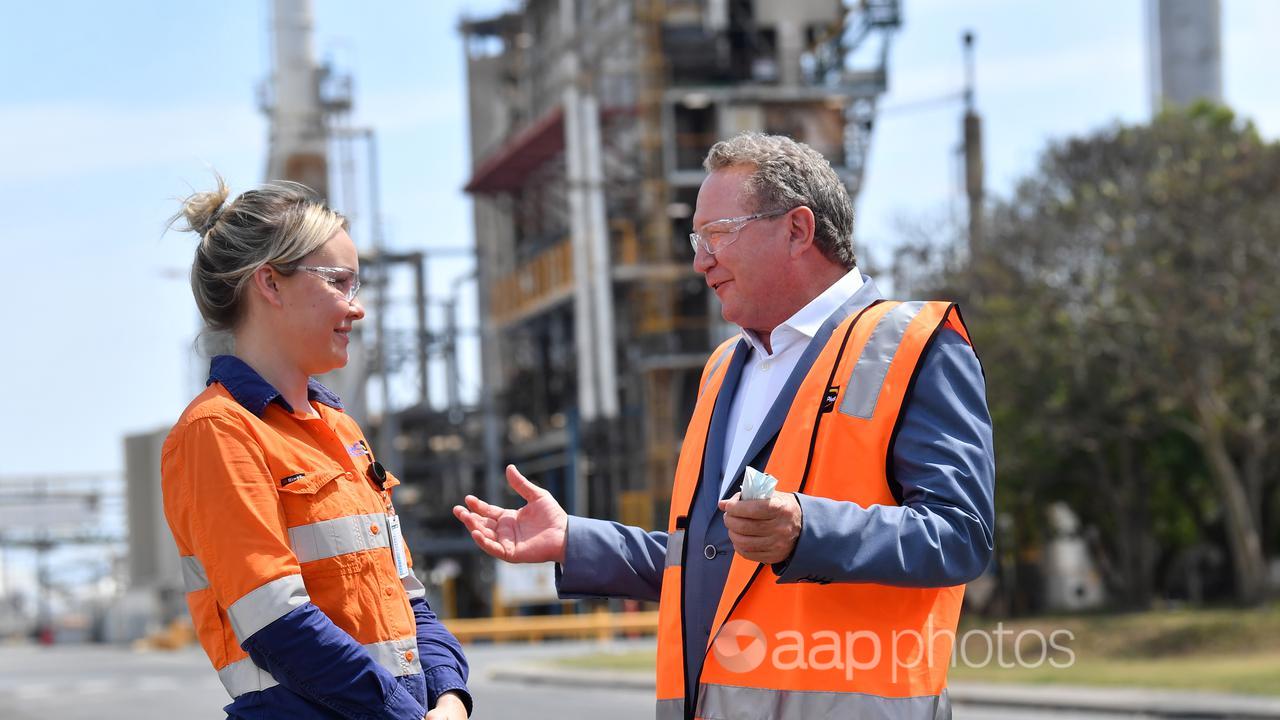Under pressure over its role in driving global greenhouse gas emissions, the fossil fuel industry has proposed reducing the carbon footprint of coal and gas energy by converting it into hydrogen.
However, Australian billionaire businessman Andrew Forrest, a major investor in the competing renewable technology of “green” hydrogen, has dismissed hydrogen derived from coal and gas as even worse than the status quo.
Speaking at the Green Hydrogen Organisation‘s Global Assembly in Barcelona on May 18, the Fortescue Future Industries founder claimed hydrogen made from fossil fuels is “highly polluting and therefore dangerous to humanity”.
“It is not even low carbon. It is worse than burning the fossil fuels in the first place…” Dr Forrest said.
His claim is true of fossil fuel hydrogen being produced at commercial scale today, with studies showing the energy lost in conversion leading to higher emissions. The industry is attempting to scale up carbon capture and storage (CCS) solutions which, in theory, could eventually offer lower emissions than conventional coal and gas.
Hydrogen made from coal, known as “black” or “brown” hydrogen, uses water and heat (as this journal article explains on page 4) to turn coal into a gas which can be used as a fuel.
Alternatively, hydrogen made from natural gas, known as “grey” hydrogen, is produced via steam reformation.
Experts told AAP FactCheck these forms of hydrogen production generate higher emissions than simply burning coal or gas, as energy efficiency is much lower.
An Australian National University study published in January found “the total emissions intensities of the production of hydrogen made from both coal and gas without CCS are significantly higher than combusting the fossil-fuel feedstock. This is due to large energy losses in conversion”.
Study co-author Dr Fiona Beck told AAP FactCheck in an email that “making hydrogen from gas and coal releases more greenhouse gas per unit of energy than just burning the fossil fuel directly. This is due to the fact that the processes have energy efficiencies between 60 and 80 per cent”.
Amy Townsend-Small, a methane gas emissions expert at the University of Cincinnati, agrees.
“Making hydrogen out of natural gas and then using it as a fuel has a higher greenhouse gas emissions profile than using natural gas,” Dr Townsend-Small told AAP FactCheck via email.
An emerging alternative is “blue” hydrogen, which uses CCS to reduce emissions, although experts are divided on whether it could deliver lower emissions than regular fossil fuel use.
A 2021 study by researchers from Stanford and Cornell universities indicated blue hydrogen is more than 20 per cent emissions-intensive than burning fossil fuels for heat.
The researchers found CCS generates unavoidable fugitive methane emissions, and also requires additional natural gas consumption to power the process, which further adds to emissions.
The study notes that it assumes the carbon can be stored indefinitely, which is “optimistic and unproven”.
Kondo-Francois Aguey-Zinsou, a hydrogen technology expert at the University of Sydney, said the study reached this conclusion because it assumed gas would be used to power the carbon capture process.
“If the energy comes from renewables to do so, then the carbon footprint will be lower,” Professor Aguey-Zinsou told AAP FactCheck in an email. “In contrast, if the energy for converting methane into hydrogen comes from fossil fuels then the carbon footprint will be high.”
Thomas Longden, another of the ANU study’s co-authors, said blue hydrogen offered potential for lower emissions from processing of the hydrogen itself, but increases emissions when related to the extraction and processing of the input fuels.
“Hydrogen made from natural gas leads to more fugitive emissions – methane that is leaked into the environment during the extraction and processing of natural gas – compared to just burning natural gas directly,” Dr Longden told AAP FactCheck via email.
“Adding CCS will not reduce these methane emissions as they occur at the extraction and processing stages. So, including CCS in the process actually increases fugitive emissions further, as more natural gas is needed.”
The Verdict
Andrew Forrest’s claim that hydrogen made from fossil fuels generates more emissions than simply burning coal and gas is true. This is largely because the processes are less energy efficient. Experts told AAP FactCheck that carbon capture and storage in theory could make fossil-fuel hydrogen more efficient than regular coal and gas, but this is yet to be reliably delivered on a commercial scale.
True – The claim is accurate.
* Editor’s note: AAP FactCheck has expanded its ability to fact-check environmental issues with the support of the Australian Conservation Foundation. AAP FactCheck retains full editorial independence in this project and continues to apply the rigorous standards required for accredited members of the International Fact-Checking Network.
All information, text and images included on the AAP Websites is for personal use only and may not be re-written, copied, re-sold or re-distributed, framed, linked, shared onto social media or otherwise used whether for compensation of any kind or not, unless you have the prior written permission of AAP. For more information, please refer to our standard terms and conditions.


















